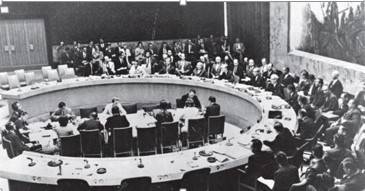 Every January 5 serves as a poignant reminder for the people of Kashmir, a perpetual echo of the unfulfilled promise made to them on this day in 1949. On that day, the United Nations Commission on India and Pakistan adopted a resolution advocating for a free and impartial plebiscite in the region of Jammu and Kashmir. Since then, like a solemn ritual, Kashmiris commemorate the day as a symbol of self-determination, fervently hoping for global attention. However, as the years pass, frustration intensifies, making it increasingly challenging for the Kashmiris to maintain faith in international justice or sustain optimism. Nevertheless, the flame of the Kashmiri struggle for freedom persists, undeterred.
Every January 5 serves as a poignant reminder for the people of Kashmir, a perpetual echo of the unfulfilled promise made to them on this day in 1949. On that day, the United Nations Commission on India and Pakistan adopted a resolution advocating for a free and impartial plebiscite in the region of Jammu and Kashmir. Since then, like a solemn ritual, Kashmiris commemorate the day as a symbol of self-determination, fervently hoping for global attention. However, as the years pass, frustration intensifies, making it increasingly challenging for the Kashmiris to maintain faith in international justice or sustain optimism. Nevertheless, the flame of the Kashmiri struggle for freedom persists, undeterred.
The principle of a nation or community’s right to self-determination stands as a crucial tenet of the UN Charter. In the aftermath of its establishment in 1945 with only 73 members, the UN witnessed numerous nations attaining independence through the exercise of self-determination, expanding its membership to 193. Notably, the Palestinians and Kashmiris remain among the few yet to realize this fundamental right.
Over the past four and a half years, the situation has taken a distressing turn. The Indian government’s revocation of Article 370 from the Indian constitution stripped Kashmiris of their statehood, ushering in a period of intensified hardships for these freedom-loving people. Questions arise regarding India’s long-term objectives in Kashmir. Can it realistically sustain a colonial-like rule over eight million people? The internal centrifugal forces already evident in various parts of the country raise concerns about India’s ability to maintain stability while occupying eight million agitated souls.
Analysts posit different theories, with some suggesting that India fears granting self-determination to Kashmiris may trigger similar demands from other regions. However, history attests that no nation can indefinitely subjugate an unwilling populace. Others argue that Kashmir’s strategic importance to India justifies its continued occupation, yet the strategic value of an unwilling population remains questionable. Additionally, efforts to alter the demographics through new domicile laws face unified opposition from all segments of the Kashmiri population.
It is imperative for the Indian leadership and its intellectual circles to contemplate the repercussions of ruling through force, eroding identities, and casting suspicion on every Kashmiri aspiring for self-determination. A more constructive approach involves finding resolutions in line with the aspirations of the Kashmiri people, utilizing the UN Security Council resolutions as a framework for conflict resolution.
Pondering an alternative scenario, one envisions a South Asia led by India through mutual respect and fostering interdependence rather than coercion. Currently, South Asia stands as the least integrated and most conflict-ridden region. Could a resolution of the Kashmir dispute pave the way for defusing tensions and transforming South Asia into a region of peace? The hope persists, even if uncertain, that India may one day heed the voices of Kashmiris and Pakistanis on this pivotal January 5th.
(The write is research scholar at Department of Mass Communication, AIOU Islamabad, and works as sub editor at Daily Country News Islamabad.)








